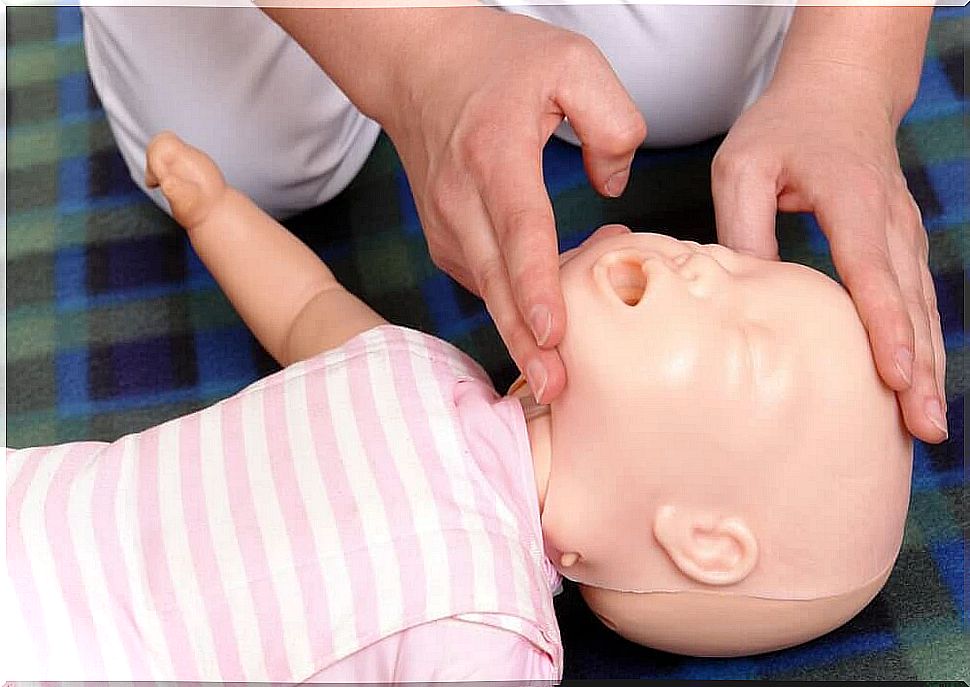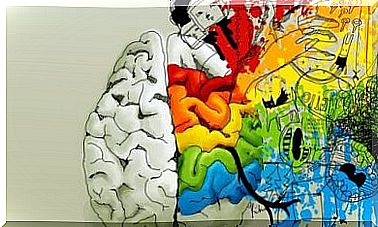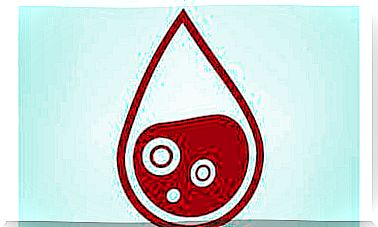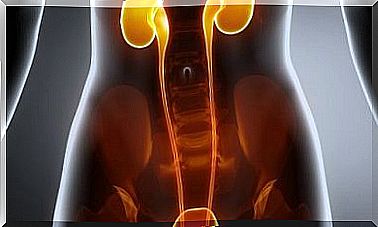Resuscitation Of A Baby: First Aid
Babies can easily suffer accidents that put their lives at risk. Knowing cardiopulmonary resuscitation techniques can be life-saving when it comes to a situation that affects breathing and heartbeat.

Baby resuscitation techniques respond to situations no one wants to experience, especially not with a child. However, using these techniques can mean the difference between life and death.
Cardiovascular resuscitation, or resuscitation, is a rescue procedure used when breathing or heartbeat fails. Of course, reading our article is not enough. D u must log in to a course.
If you are a mother, father, or work with young children, it is really advisable to take a baby resuscitation course . However, as children grow up, cardiovascular resuscitation techniques also change.
When should resuscitation be used?
Babies are innate explorers. However, while exploring the world around them, they can become victims of accidents that endanger their lives.
That is why it is so important that parents and educators minimize risk factors in the child’s environment. You always have to pay attention to their activities.
In the event of an accident, time plays an important role. If a baby is unconscious and not breathing, permanent brain damage can occur after just 4 minutes . Death can occur 4 to 6 minutes later.

If a baby makes strange noises, is completely still, if he is choking or if the color of his skin changes, then he may be choking. Then one must remain calm and act quickly to effectively use baby resuscitation techniques.
How does it come about that a baby stops breathing or his heart stops?
- Choking from small objects such as buttons, coins, toy parts, or food.
- A lung disease that is complicated.
- A poisoning through food, drugs or toxic substances.
- Drowning in bath water or a swimming pool.
- Electric shock.
- Profuse bleeding from an injury.
- Skull injury or other serious injury from a fall.
What are the steps involved in resuscitation of a baby?
1. Assess the situation quickly
If your baby is coughing and unable to breathe when their skin changes color, you should help them expel whatever is blocking their airways. Coughing is a natural mechanism for clearing a blockage.
If the baby is unconscious, cardiopulmonary resuscitation should be performed so that he can resume breathing and heartbeat. Ask someone to call ambulance while you are taking care of the child.
If you are alone, you must not neglect the baby because of the call. First give him two minutes of cardiopulmonary resuscitation and then call ambulance without leaving the baby out of sight.
All of these techniques must be used with extreme caution and gentleness.
2. If your baby is conscious, help him clear the blockage
- Place it on your arm, mouth up, and hold its head and neck with the same hand. Put your other arm on top of the baby so that it’s between both hands and arms.
- Use your thumb and forefinger on your other hand to hold the baby’s jaw. Turn it over so its mouth is facing down. Support the arm that is holding the baby on your thigh. The baby’s head should be below its torso.
- With your free hand, give five nudges between the shoulder blades to help the baby push the object out.
- If the baby doesn’t eliminate the item, put your free hand on the back of their neck and place your arm on your baby’s spine. Flip it over while keeping the other hand and arm resting on your chest.

- Use the thumb and forefinger of the hand you are holding your baby with to keep his or her jaw steady. Support the arm on whose back the baby rests on your thigh. Make sure the baby’s head is lower than his body.
- Place two or three fingertips on your baby’s chest, level with their nipples. Press down on the chest to pull it back 3 to 4 cm. Then, release the pressure to return his chest to normal without removing your fingers from his sternum.
- Perform five pectoral compressions. You have to be gentle, never abrupt. Then repeat the process. Flip the baby over, give him five nudges on the back, and then repeat the pectoral compressions. Until the baby spits out the blockage or starts coughing and breathing again on its own.
3. If your baby is unconscious, do cardiopulmonary resuscitation
- Make sure it is unconscious. Call his name. See if his chest is moving and try to hear his breathing.
- Gently lay the baby down on a firm surface. Hold the baby’s forehead with one hand and gently tilt their head back. With the other hand, apply pressure on the baby’s chest so that it recedes about 3 to 4 cm. Then loosen it so that the chest returns to normal.
- Perform 30 compressions. Count them quickly and without pausing (“and 1 and 2 and 3” until you get to 30).
- Open your airways. Hold your chin with one hand and, at the same time, turn your head backwards on your forehead with the other hand.
- Make sure the baby is breathing. Put your ear near your nose and mouth. Feel his breath with your cheek.
- If the baby is not breathing, cover his mouth and nose with your mouth. Give him two breaths that should last a second that should allow his chest to expand.
- If the breath doesn’t start, check to see what is blocking the airway. If you can see it, try to get it out with your little finger. Repeat the compressions and the two breaths until the baby comes to or help arrives.

What other precautions should one take before resuscitating a baby?
If there is a possibility of injury to the spine, do not move your head or neck. To attempt resuscitation of a baby, you must move it with the help of another person. If the baby is bleeding, you must stop the bleeding first before performing the resuscitation.
The baby must not be left alone if an accident has occurred. It is very important to call the emergency services, the faster the better. However, if you are alone, remember: do 2 minutes of resuscitation before making the call, without leaving the baby out of sight.
If an automatic, external defibrillator is available, you can do without resuscitation. These machines have pads or plates that are placed on the chest and that automatically check the heart rhythm.
They give a sudden push when they realize that the heart needs it to get its rhythm back up and running. However, you must first make sure that the device can be used on babies.









